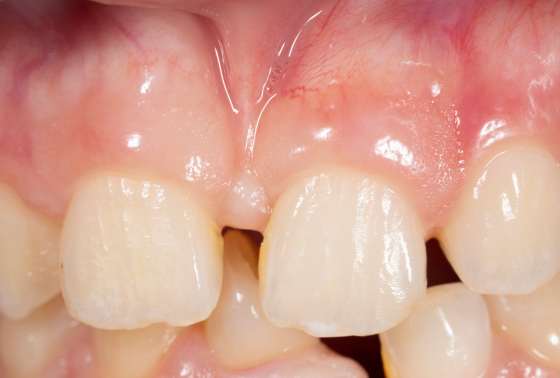What Is A Frenectomy? Everything You Need To Know
What is a frenectomy? When would I need one? What do I need to know?
A frenectomy might sound like a complicated dental procedure, but it’s quite straightforward and can significantly improve oral health and function. In this blog, we’ll explore what a frenectomy is, why it may be necessary, and what you can expect from the procedure.
Understanding Oral Frenums
First, let’s define what frenums are. Frenums are small folds of tissue in your mouth that connect your lips, cheeks, and tongue to your gums. There are three main types of frenums:
- Labial Frenum: This is the tissue that connects your upper lip to your upper gums.
- Lingual Frenum: This is the tissue that connects the underside of your tongue to the floor of your mouth.
- Buccal Frenum: This tissue connects the inside of your cheeks to your gums.
Reasons for a Frenectomy
A frenectomy involves removing or modifying one of these frenums. Here are common reasons why this procedure might be necessary:
Tongue-tie (Ankyloglossia) Tongue-tie occurs when the lingual frenum is too short or tight, restricting the movement of the tongue. This can cause difficulties with speech, eating, and oral hygiene.
Lip-tie A lip-tie happens when the labial frenum is too tight, restricting lip movement. This can lead to issues with breastfeeding in infants and can affect dental health by creating a gap between the front teeth.
Speech Difficulties Both tongue-tie and lip-tie can contribute to speech problems. A frenectomy can help improve speech by allowing better movement of the tongue and lips.
Feeding Problems in Infants Infants with a tongue-tie or lip-tie may have trouble breastfeeding or bottle-feeding. A frenectomy can resolve these feeding issues, helping the baby feed more effectively and comfortably.
Dental Issues In some cases, a tight frenum can cause gum recession or contribute to a gap between the front teeth. Removing or adjusting the frenum can help alleviate these dental problems.
Types of Frenectomy Procedures
There are different types of frenectomy procedures, depending on which frenum needs to be addressed:
Lingual Frenectomy This procedure involves removing or adjusting the lingual frenum to resolve tongue-tie and improve tongue mobility.
Labial Frenectomy This procedure involves removing or adjusting the labial frenum to address lip-tie, which can help close a gap between the front teeth and improve lip movement.
Buccal Frenectomy Though less common, a buccal frenectomy involves modifying the buccal frenum to alleviate any issues it might be causing.
The Frenectomy Procedure
A frenectomy typically involves several steps:
Initial Consultation and Diagnosis Your dentist or oral surgeon will examine your mouth and discuss your symptoms. They will determine if a frenectomy is necessary and explain the procedure.
Preparation for the Procedure The area around the frenum will be numbed with a local anesthetic to ensure your comfort during the procedure.
Performing the Frenectomy Using a small surgical tool or laser, the dentist or oral surgeon will carefully remove or modify the frenum. The procedure is usually quick and minimally invasive.
Post-Procedure Care After the procedure, you’ll receive instructions on how to care for the surgical site to promote healing and prevent infection.
Recovery and Aftercare
Recovery from a frenectomy is typically quick. Here are some tips for managing discomfort and ensuring proper healing:
- Follow your dentist’s or oral surgeon’s instructions regarding diet, oral hygiene, and activity restrictions.
- Use ice packs to reduce swelling and over-the-counter pain relievers to manage discomfort.
- Avoid strenuous activity and hard or spicy foods for a few days.
- Keep the area clean by gently rinsing with salt water or an antiseptic mouthwash.
Benefits of a Frenectomy
A frenectomy can offer several positive outcomes, including:
- Improved oral function, such as better tongue and lip movement.
- Enhanced speech clarity and ability to pronounce certain sounds.
- Better feeding in infants, leading to more effective breastfeeding or bottle-feeding.
- Improved dental health, by resolving issues like gum recession or gaps between teeth.
Potential Risks and Complications
While a frenectomy is generally safe, there are potential risks and complications, such as:
- Infection at the surgical site.
- Bleeding or swelling.
- Temporary discomfort or pain.
Following your dentist’s or oral surgeon’s aftercare instructions can help minimize these risks and ensure a smooth recovery.
Conclusion
A frenectomy is a straightforward procedure that can address various oral health issues caused by problematic frenums. If you or your child are experiencing symptoms like restricted tongue or lip movement, speech difficulties, or feeding problems, consult with your dentist or oral surgeon. They can evaluate your condition and determine if a frenectomy is the right solution. Prioritizing your oral health through professional care and treatment can lead to improved function, comfort, and overall well-being.






